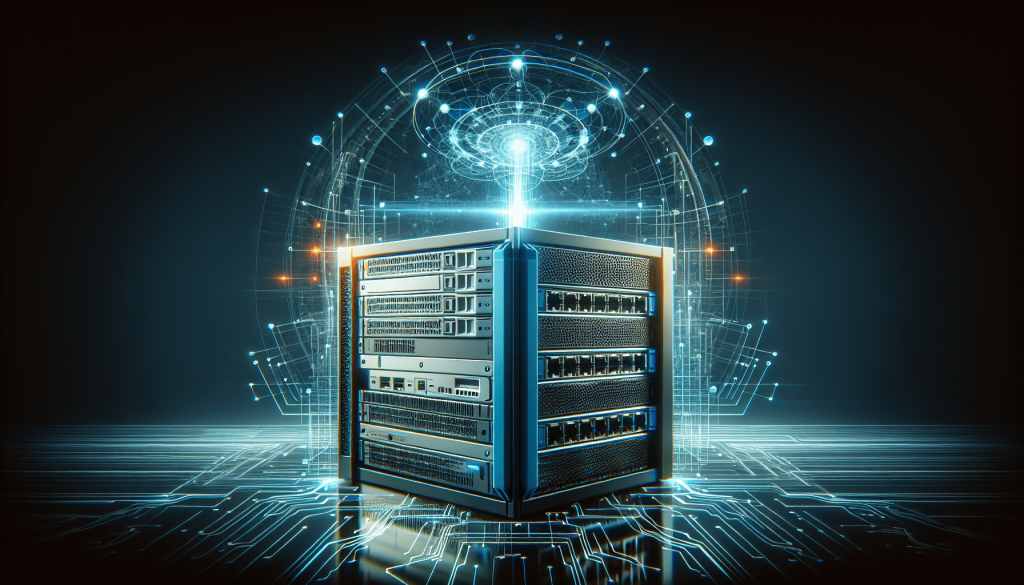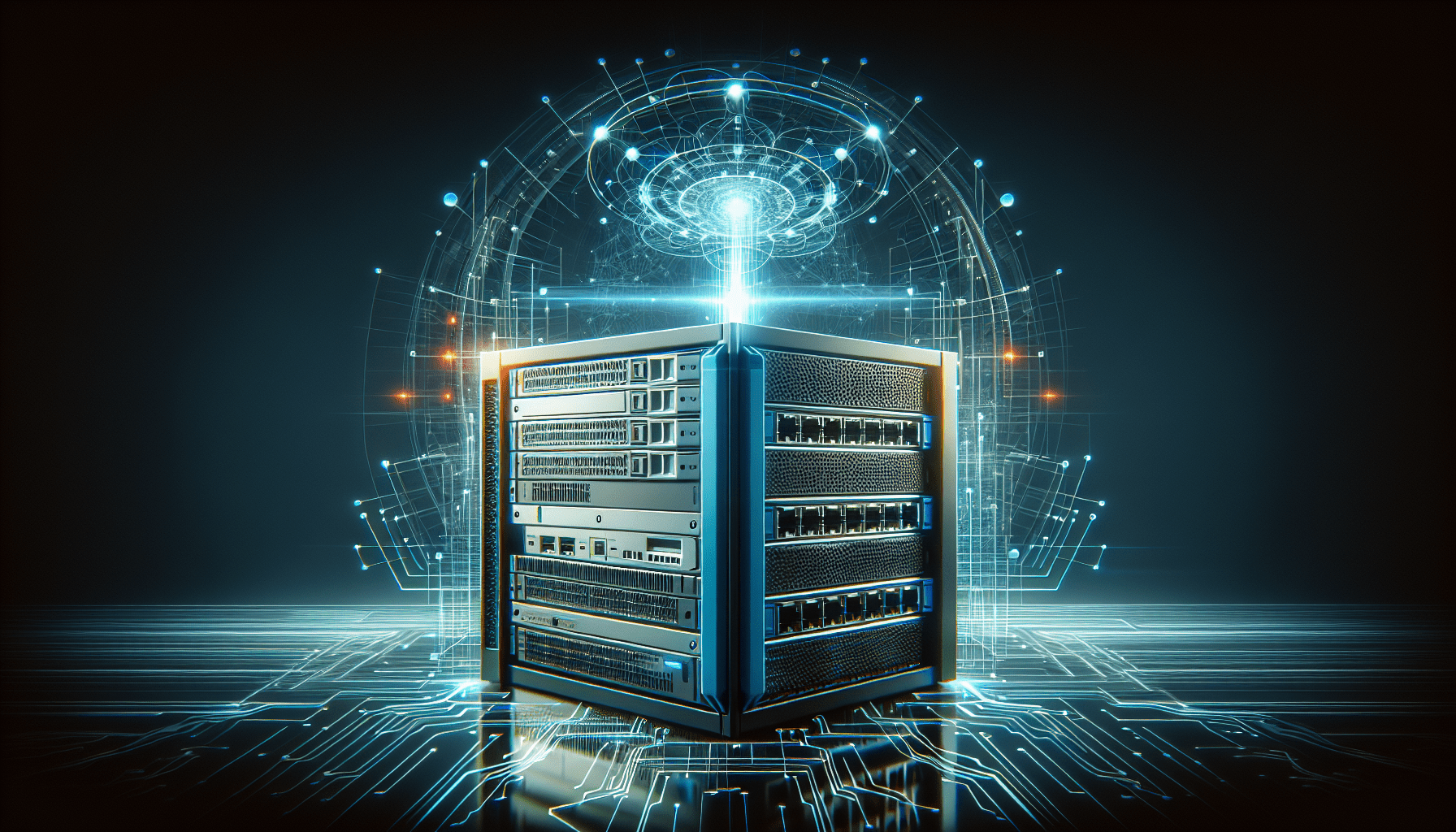In this article, you will be taken on an exciting journey, exploring the remarkable advancements in network infrastructure technologies. We will delve into the fascinating world of ever-evolving networks and discover how they have transformed over time. From the early days of dial-up connections to the lightning-fast speeds of fiber optics, you will gain a deeper understanding of how these advancements have revolutionized our lives. So, grab your virtual passport and let’s embark on this exploration together!
Historical Overview
Introduction to Network Infrastructure
Network infrastructure refers to the underlying foundation or framework that enables the transfer of data between devices and systems within a network. It forms the backbone of modern communication, supporting the exchange of information across various platforms and devices. Over the years, network infrastructure technologies have evolved significantly, revolutionizing the way we connect and communicate.
Early Network Infrastructure Technologies
In the early days of network infrastructure, wired connections dominated the scene. These connections utilized physical cables, enabling devices to communicate by transmitting electrical signals. One of the most prominent early technologies was Ethernet, which pioneered the concept of local area networks (LANs). Ethernet established a standardized method of data transmission, offering a reliable and efficient means of communication within a limited geographic area.
Wired Network Infrastructure
Ethernet
Ethernet, introduced in the 1970s, rapidly became the de facto standard for local area networking. It employs a protocol known as Carrier Sense Multiple Access with Collision Detection (CSMA/CD), which allows multiple devices to share the same network and efficiently transmit data. Ethernet initially operated at speeds up to 10 megabits per second (Mbps) but has since evolved to support gigabit and even terabit speeds, enabling faster and more robust connections.
Fiber Optic Cables
In recent years, fiber optic cables have emerged as a game-changer in wired network infrastructure. These cables utilize strands of glass or plastic fibers to transmit data as pulses of light, offering unparalleled speed and bandwidth. Fiber optic cables have revolutionized long-distance communication due to their immunity to electromagnetic interference and significant data capacity. They are increasingly replacing traditional copper cables, enabling faster internet speeds and supporting the growing demand for bandwidth-intensive activities.
Wireless Network Infrastructure
Wi-Fi
Wi-Fi, short for wireless fidelity, has transformed the way we connect to the internet and communicate wirelessly. It operates on the principles of radio waves, allowing devices to transmit and receive data without the need for physical cables. Wi-Fi has become ubiquitous, connecting countless devices in homes, businesses, and public spaces. With advancements such as Wi-Fi 6, which offers faster speeds, improved capacity, and reduced latency, wireless network infrastructure continues to evolve and cater to the ever-growing demand for wireless connectivity.
Cellular Networks
Cellular networks, such as 3G, 4G, and the upcoming 5G, have revolutionized mobile communication and connectivity. These networks utilize a combination of wired and wireless infrastructure to enable voice and data transmission over a vast geographic area. Cellular networks provide mobility and coverage, allowing users to stay connected on the go. With each generation, cellular networks have evolved, offering faster speeds, lower latency, and improved reliability. 5G, in particular, promises to unlock unprecedented opportunities by enabling enhanced mobile broadband and ultra-reliable low-latency communications.

Software-Defined Networking (SDN)
Definition and Principles
Software-Defined Networking (SDN) represents a paradigm shift in network infrastructure technology. It decouples the network’s control plane from the data plane, allowing administrators to centrally manage and configure networks using software-based controllers. SDN promotes flexibility, scalability, and automation, streamlining network management and enabling dynamic allocation of resources. By abstracting the network’s underlying complexities, SDN simplifies network management and facilitates the implementation of innovative services.
Advantages and Challenges
SDN offers several advantages over traditional networking approaches. It enables network operators to achieve centralized control and orchestration, resulting in simplified network management, faster provisioning of services, and improved network performance. SDN also facilitates the implementation of network virtualization, enhancing resource utilization and flexibility. However, the adoption of SDN also poses challenges, such as security concerns, compatibility with existing infrastructure, and the need for skilled personnel to manage and operate SDN-enabled networks.
Virtualization in Network Infrastructure
Network Function Virtualization (NFV)
Network Function Virtualization (NFV) is a concept that aims to virtualize network functions traditionally performed by dedicated hardware appliances, such as routers, firewalls, and load balancers. By virtualizing these functions, network operators can consolidate equipment, reduce costs, and enhance scalability and flexibility. NFV allows for the dynamic deployment and provisioning of network services, making it easier to adapt to changing demands and achieve higher levels of efficiency.
Virtual Private Networks (VPNs)
Virtual Private Networks (VPNs) play a crucial role in network infrastructure by providing secure and private communication over public networks. A VPN creates an encrypted tunnel between the user’s device and the destination network, ensuring that sensitive data remains protected from unauthorized access. VPNs allow businesses to extend their private networks securely and enable users to access resources remotely. As cyber threats continue to rise, VPNs have become an essential tool in safeguarding sensitive information and maintaining privacy.
Internet of Things (IoT) and Network Infrastructure
Interconnectivity and Scalability
The Internet of Things (IoT) has witnessed tremendous growth, with billions of devices connected worldwide. IoT devices rely on network infrastructure to communicate and exchange data, enabling the seamless integration of physical devices with software systems. The scalability of network infrastructure plays a critical role in supporting the ever-increasing number of IoT devices, ensuring reliable connectivity and efficient data transmission across vast networks.
Security and Privacy Concerns
With the proliferation of IoT devices, security and privacy concerns have gained prominence in network infrastructure. IoT devices often collect and transmit sensitive data, making them potential targets for cyber-attacks. Ensuring the security and privacy of IoT networks requires robust authentication mechanisms, data encryption, and secure communication protocols. As IoT adoption continues to rise, addressing these security challenges will be crucial to maintain trust and protect sensitive information.
Cloud Computing and Network Infrastructure
Cloud-based Networking
Cloud computing has revolutionized the way organizations consume and utilize computing resources, and it has had a significant impact on network infrastructure. Cloud-based networking allows organizations to leverage the vast resources and scalability offered by cloud service providers to support their network infrastructure needs. This approach eliminates the need for on-premises infrastructure, reduces costs, and enables organizations to focus on their core business objectives while relying on the expertise of cloud providers.
Network Function Virtualization in the Cloud
The convergence of cloud computing and network function virtualization (NFV) has opened new possibilities for network infrastructure. By virtualizing network functions within the cloud, organizations can achieve greater flexibility and agility. Network functions can be dynamically provisioned and scaled based on demand, minimizing the need for dedicated hardware appliances. Cloud-based NFV offers cost efficiencies, scalability, and simplified management, enabling organizations to adapt quickly to changing network requirements.
5G and Network Infrastructure
Enhanced Mobile Broadband
5G, the fifth generation of cellular networks, promises to deliver enhanced mobile broadband (eMBB) capabilities. With faster speeds, lower latency, and increased network capacity, 5G enables seamless streaming of high-definition content, supports virtual and augmented reality applications, and facilitates real-time communication. eMBB enhances the overall user experience and paves the way for new applications that demand higher bandwidth and responsiveness.
Ultra-Reliable Low-Latency Communications
Another key feature of 5G is its ability to support ultra-reliable low-latency communications (URLLC). URLLC ensures near-instantaneous communication between devices, making it suitable for time-critical applications such as autonomous vehicles, remote surgery, and industrial automation. By providing reliable and low-latency connections, 5G unlocks new opportunities for industries that rely on real-time data and precise coordination.
Artificial Intelligence (AI) in Network Infrastructure
AI-Driven Network Management
Artificial Intelligence (AI) is increasingly being integrated into network infrastructure to enhance network management capabilities. AI-driven network management leverages machine learning algorithms to analyze network data, detect anomalies, and optimize network performance. AI-powered solutions can automate network configuration, rapidly identify network issues, and adapt to changing network conditions. By harnessing the power of AI, network infrastructure can become more intelligent, efficient, and self-adapting.
Predictive Maintenance and Fault Detection
AI also plays a vital role in predictive maintenance and fault detection in network infrastructure. By analyzing network data and patterns, AI algorithms can identify potential issues before they cause significant disruptions. Predictive maintenance enables proactive network management, reducing downtime and improving overall network reliability. AI-driven fault detection quickly identifies and isolates network faults, enabling swift resolution and minimizing the impact on network operations.
Challenges and Future Prospects
Scalability and Flexibility
As network infrastructure continues to evolve, scalability and flexibility remain key challenges. The increasing demand for bandwidth-intensive applications, the proliferation of IoT devices, and the rapid growth of data volumes require network infrastructure to scale efficiently. Future network infrastructure technologies must be designed to accommodate this growing demand while ensuring flexibility and adaptability to changing networking needs.
Security and Privacy
Security and privacy concerns are persistent challenges in network infrastructure. As networks become more interconnected and facilitate the exchange of sensitive data, ensuring robust security measures and protecting user privacy become paramount. Future network infrastructure technologies must address these concerns by implementing advanced encryption mechanisms, secure authentication protocols, and proactive threat detection and mitigation techniques.
Emerging Technologies and Standards
The future of network infrastructure holds great potential with emerging technologies and evolving standards. Innovations such as quantum networking, edge computing, and mesh networks are poised to reshape network infrastructure, offering improved speed, reliability, and efficiency. Additionally, the development and adoption of new networking standards, such as the transition to IPv6 and the advancement of SDN architecture, will continue to shape the future of network infrastructure technologies.
In conclusion, network infrastructure technologies have come a long way, from the early days of wired connections to the current era of wireless communication, virtualization, and AI-driven network management. As the world becomes increasingly interconnected, network infrastructure must continually evolve to meet the growing demands of modern communication and connectivity. By embracing emerging technologies, addressing security challenges, and prioritizing scalability and flexibility, the future of network infrastructure holds tremendous promise. With each advancement, network infrastructure paves the way for a more connected and technologically advanced society.
